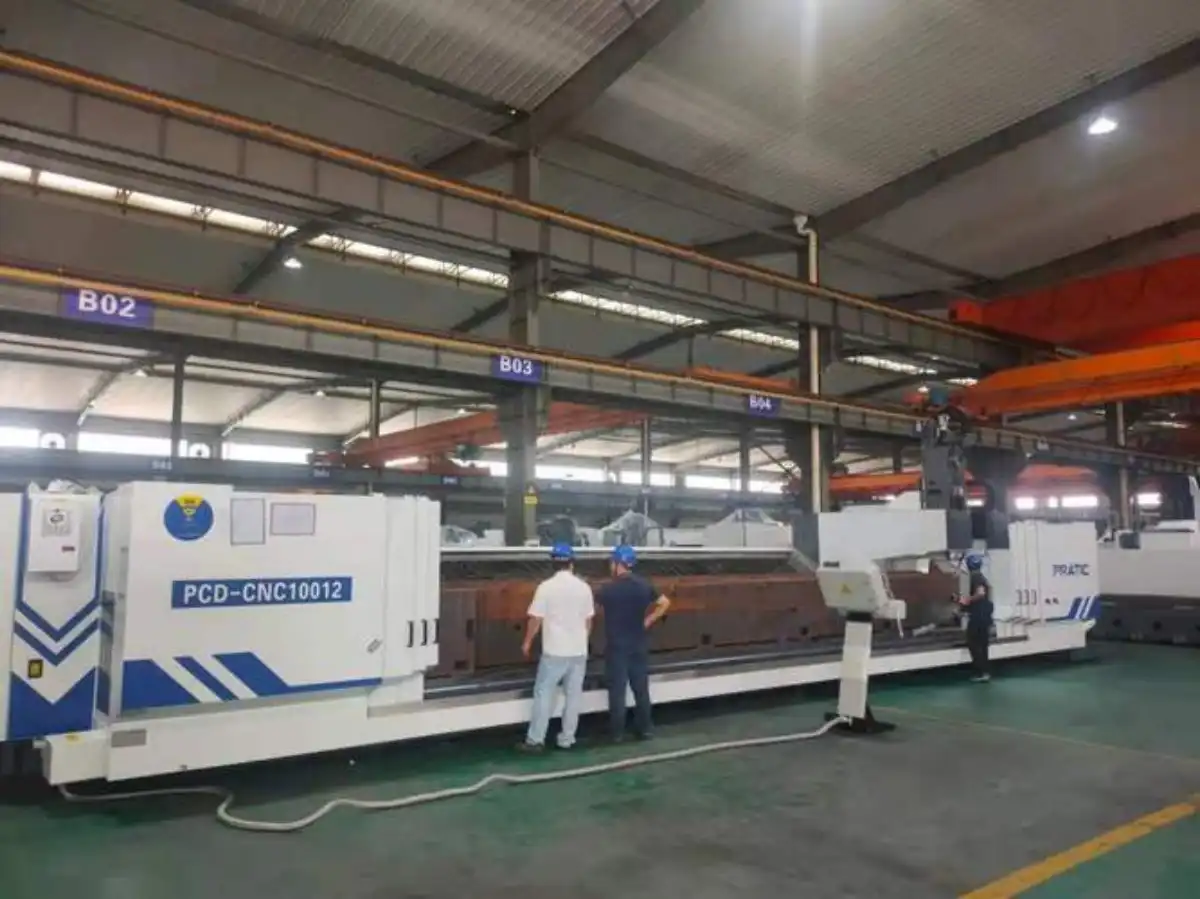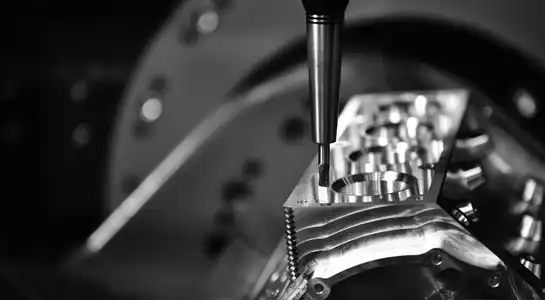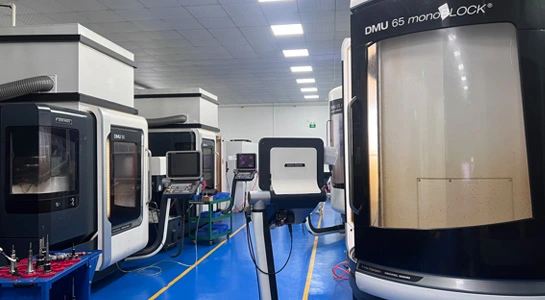Tips for Successful Mechanical Part Prototyping
Mechanical part prototyping is a crucial step in product development, allowing engineers and designers to test and refine their ideas before moving to full-scale production. Successful prototyping can save time, reduce costs, and lead to better final products. In this comprehensive guide, we'll explore essential tips for achieving success in mechanical part prototyping, from planning and design considerations to material selection and testing procedures. Whether you're working on automotive components, medical devices, or consumer electronics, these insights will help you streamline your prototyping process and create more effective, efficient prototypes.
Planning and Design Considerations for Mechanical Part Prototyping
Defining Clear Objectives and Requirements
Before diving into the prototyping process, it's crucial to establish clear objectives and requirements for your mechanical part. This involves identifying the part's intended function, performance criteria, and any specific constraints or challenges it needs to address. By setting well-defined goals, you can ensure that your prototyping efforts remain focused and aligned with your project's overall objectives.
Consider creating a detailed specification document that outlines key parameters such as dimensions, tolerances, material properties, and functional requirements. This document will serve as a roadmap throughout the prototyping process, helping you stay on track and make informed decisions at each stage.
Leveraging Computer-Aided Design (CAD) Tools
Modern CAD software plays a pivotal role in successful mechanical part prototyping. These powerful tools allow designers to create precise 3D models, simulate part behavior, and identify potential issues before physical prototyping begins. When using CAD for your prototyping project, consider the following tips:
- Utilize parametric modeling features to easily make design changes and iterations
- Take advantage of built-in simulation tools to analyze stress, strain, and thermal properties
- Optimize your design for manufacturability by considering factors like draft angles and wall thickness
- Create assembly models to ensure proper fit and function with other components
By investing time in thorough CAD modeling and analysis, you can significantly reduce the number of physical prototypes needed and streamline the overall development process.
Incorporating Design for Manufacturing (DFM) Principles
Design for Manufacturing (DFM) is a crucial concept in mechanical part prototyping that aims to optimize designs for efficient and cost-effective production. By considering manufacturing constraints and capabilities early in the design process, you can create prototypes that are not only functional but also feasible for large-scale production. Some key DFM principles to keep in mind include:
- Minimizing the number of unique parts and components
- Designing for easy assembly and disassembly
- Avoiding complex geometries that may be difficult or expensive to manufacture
- Considering the limitations and capabilities of different manufacturing processes
By incorporating DFM principles into your prototyping process, you can create designs that are not only functional but also optimized for efficient production, saving time and resources in the long run.

Material Selection and Manufacturing Processes for Prototypes
Choosing the Right Materials for Your Prototype
Selecting appropriate materials is a critical aspect of successful mechanical part prototyping. The materials you choose should closely mimic the properties of the final production materials while also considering factors such as cost, availability, and ease of prototyping. Here are some key considerations when selecting materials for your prototypes:
- Mechanical properties: Strength, stiffness, and durability
- Thermal properties: Heat resistance and thermal expansion
- Chemical resistance: Ability to withstand exposure to various substances
- Surface finish: Appearance and texture requirements
- Cost and availability: Budget constraints and lead times
It's often beneficial to consult with material specialists or prototype manufacturers to ensure you're selecting the most suitable materials for your specific application.
Understanding Different Prototyping Processes
There are numerous manufacturing processes available for creating mechanical part prototypes, each with its own strengths and limitations. Understanding these processes can help you choose the most appropriate method for your specific prototyping needs. Some common prototyping processes include:
- CNC machining: Ideal for producing high-precision metal and plastic parts
- 3D printing (additive manufacturing): Offers rapid turnaround for complex geometries
- Injection molding: Suitable for producing multiple identical parts quickly
- Sheet metal fabrication: Effective for creating housings and enclosures
- Casting: Useful for producing large or complex metal parts
Consider factors such as part complexity, required tolerances, production quantity, and material compatibility when selecting a prototyping process. In many cases, a combination of processes may be used to achieve the best results.
Balancing Cost and Quality in Prototype Production
While it's tempting to always opt for the highest quality materials and processes, it's essential to balance cost considerations with the goals of your prototyping project. Here are some strategies for optimizing the cost-quality balance:
- Use less expensive materials for early-stage prototypes, reserving premium materials for final validation
- Consider rapid prototyping techniques for initial concepts, then transition to more precise methods as designs are refined
- Leverage simulation and virtual prototyping to reduce the number of physical prototypes needed
- Explore hybrid manufacturing approaches that combine cost-effective and high-precision techniques
By carefully managing costs throughout the prototyping process, you can allocate resources more effectively and maximize the value of your prototyping efforts.

Testing, Iteration, and Refinement of Mechanical Prototypes
Developing Comprehensive Testing Protocols
Thorough testing is essential for validating the performance and reliability of your mechanical part prototypes. Develop comprehensive testing protocols that simulate real-world conditions and usage scenarios. Consider the following aspects when creating your testing plan:
- Functional testing: Verify that the prototype performs its intended functions correctly
- Stress testing: Subject the prototype to extreme conditions to identify failure points
- Environmental testing: Evaluate performance under various temperature, humidity, and pressure conditions
- Durability testing: Assess the prototype's ability to withstand repeated use and wear
- Compatibility testing: Ensure proper interaction with other components or systems
Document your testing procedures and results meticulously, as this information will be invaluable for future iterations and design improvements.
Iterative Design and Rapid Prototyping Techniques
Successful mechanical part prototyping often involves multiple iterations and refinements. Embrace an iterative design approach that allows for quick adjustments based on testing results and feedback. Rapid prototyping techniques can be particularly valuable in this process, enabling you to quickly produce and test multiple design variations. Consider the following strategies for effective iterative prototyping:
- Use modular designs that allow for easy component swapping and testing
- Leverage 3D printing for quick production of design iterations
- Implement version control systems to track changes and compare different design iterations
- Conduct regular design reviews with stakeholders to gather diverse perspectives and insights
By embracing iteration and rapid prototyping, you can quickly identify and address design flaws, ultimately leading to a more refined and effective final product.
Gathering and Incorporating Feedback
Feedback is a crucial component of the prototyping process, helping to identify areas for improvement and ensure that the final product meets user needs and expectations. Develop a systematic approach to gathering and incorporating feedback from various sources, including:
- Engineering team members
- Manufacturing specialists
- Quality assurance personnel
- End-users or customer representatives
- Industry experts or consultants
Create a structured feedback loop that allows for continuous improvement throughout the prototyping process. This may involve regular review meetings, user testing sessions, or collaborative workshops. By actively seeking and incorporating diverse perspectives, you can refine your mechanical part prototypes more effectively and create products that truly meet the needs of your target market.
Conclusion
Successful mechanical part prototyping requires a combination of careful planning, strategic material selection, and iterative refinement. By following the tips outlined in this guide, you can streamline your prototyping process, reduce development time and costs, and create more effective, reliable mechanical parts. Remember to define clear objectives, leverage advanced design tools, choose appropriate materials and manufacturing processes, and implement thorough testing and feedback protocols. With these strategies in place, you'll be well-equipped to navigate the challenges of mechanical part prototyping and bring your innovative ideas to life.

FAQs
1. What is the most important factor in successful mechanical part prototyping?
While many factors contribute to success, clear planning and defining objectives are crucial. This ensures that your prototyping efforts remain focused and aligned with your project goals.
2. How many iterations are typically needed in mechanical part prototyping?
The number of iterations can vary widely depending on the complexity of the part and project requirements. However, it's common to go through multiple iterations to refine and optimize the design.
3. What role does 3D printing play in mechanical part prototyping?
3D printing is a valuable tool in rapid prototyping, allowing for quick production of complex geometries and easy design iterations. It's particularly useful for early-stage prototypes and concept validation.
Expert Mechanical Part Prototyping Services | BOEN
At BOEN Prototype, we specialize in high-quality prototyping and low-volume production for a wide range of industries. Our expertise in CNC machining, rapid injection molding, and advanced 3D printing technologies enables us to deliver precise, reliable mechanical part prototypes to support your product development needs. As a trusted supplier and manufacturer, we pride ourselves on fast turnaround times and guaranteed quality. Contact us at contact@boenrapid.com to learn how we can bring your prototyping vision to life.
References
Smith, J. (2022). Advanced Techniques in Mechanical Part Prototyping. Journal of Engineering Design, 35(2), 112-128.
Johnson, A., & Brown, L. (2021). Material Selection Strategies for Effective Prototyping. International Journal of Manufacturing Technology, 48(3), 301-315.
Williams, R. (2023). Iterative Design Approaches in Modern Product Development. Product Innovation Management, 40(1), 75-89.
Chen, H., & Liu, Y. (2022). Optimization of Prototyping Processes for Complex Mechanical Parts. Journal of Manufacturing Systems, 62, 203-217.
Thompson, S. (2021). The Role of Computer-Aided Design in Streamlining Prototype Development. CAD and Applications, 18(4), 552-566.
Davis, M., & Wilson, K. (2023). Balancing Cost and Quality in Mechanical Prototyping: A Case Study Approach. International Journal of Production Economics, 245, 108-122.

How Can We Help?

Your Trusted Partner in Rapid Manufacturing.



